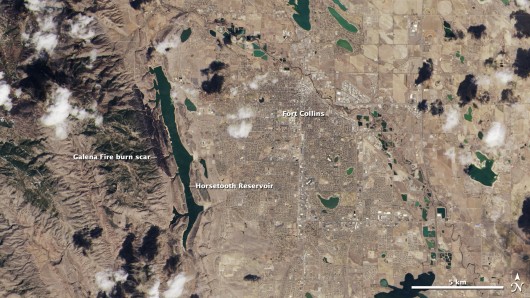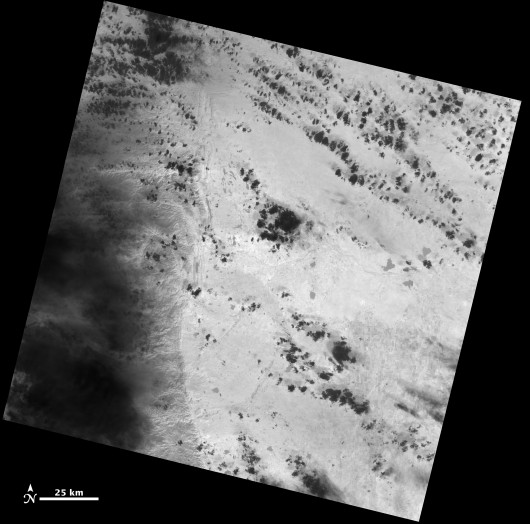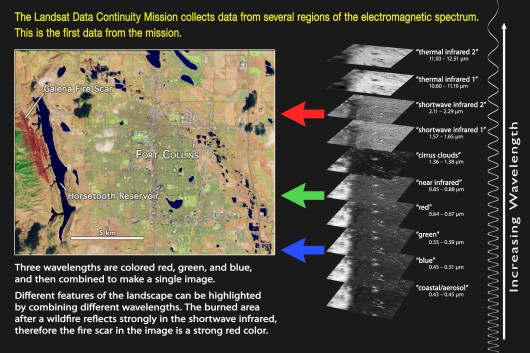Landsat's first LDCM images show Rocky Mountains in stunning detail
By Chris Wood
March 22, 2013
We haven't heard anything from NASA's Landsat Data Continuity Mission (LDCM) spacecraft since its launch in February, but the satellite is now ready to start sending its first images back home. The first batch of photos are part of a three-month testing period, and show the meeting of the Great Plains with the Front Ranges of the Rocky Mountains in Wyoming and Colorado. Viewed from space, it's already a pretty spectacular scene, but the images from the LDCM managed to enhance it even further.
The Landsat program is a 40-year long project which works to study the dynamic and ongoing changes to our planet. The program's newest satellite, which is set to be given the title of Landsat 8 when it becomes fully operational, carries a range of new sensors that allow for more detailed images than ever before.
The natural color images are handled by the the LDCM's Operational Land Imager (OLI) instrument. These images, the first example of which can be seen below, show the landscape in the same colors our eyes would see.
The OLI instrument accounts for eight of the 11 bands of the electromagnetic spectrum that are visible to the new Landsat sensors. Another instrument, known as the Thermal Infrared Sensor (TIRS), detects light reflected from the surface in two longer wavelengths called thermal infrared.
These images act as a measurement of surface temperature, with the warmer areas appearing brighter and the cooler areas darker. The TIRS measurements are one of the most important functions of the Landsat mission, with the resulting data being used for water management analysis.
As both the OLI and TIRS images are collected at the same time, the team is able to combine the data to create composites image, as shown below. This method allows for the production of extremely detailed and informative images that reveal features on the landscape that the human eye would usually miss.
The team's analysts are able to assign artificial colors to data from different spectral bands, making it easier to distinguish key surface features. A closer look at the OLI's natural color image of the Fort Collins area will reveal a dark stripe west of the Horsetooth Reservoir. This mark, which is a scar left by the Galena wildfire, appears red in the false color image created using OLI bands 3 (green), 5 (near infrared) and 7 (short wave infrared 2). The bands were assigned specific colors (blue, green and red), in order to make the feature more easily visible.
This data will actually be used by Burned Area Emergency Response teams to aid them in the planning of wildfire recovery measures, making it a great example of the importance of the Landsat program.
These early images were taken using the LDCM's pre-launch settings, with the instruments likely requiring some adjustment now that the satellite is in orbit. The team is already encouraged by the early results, with TIRS instrument scientist Dennis Reuter responding with “Wow! This is beautiful!” when shown the images.
Source: NASA
Copyright © gizmag 2003 - 2013 To subscribe or visit go to: http://www.gizmag.com



